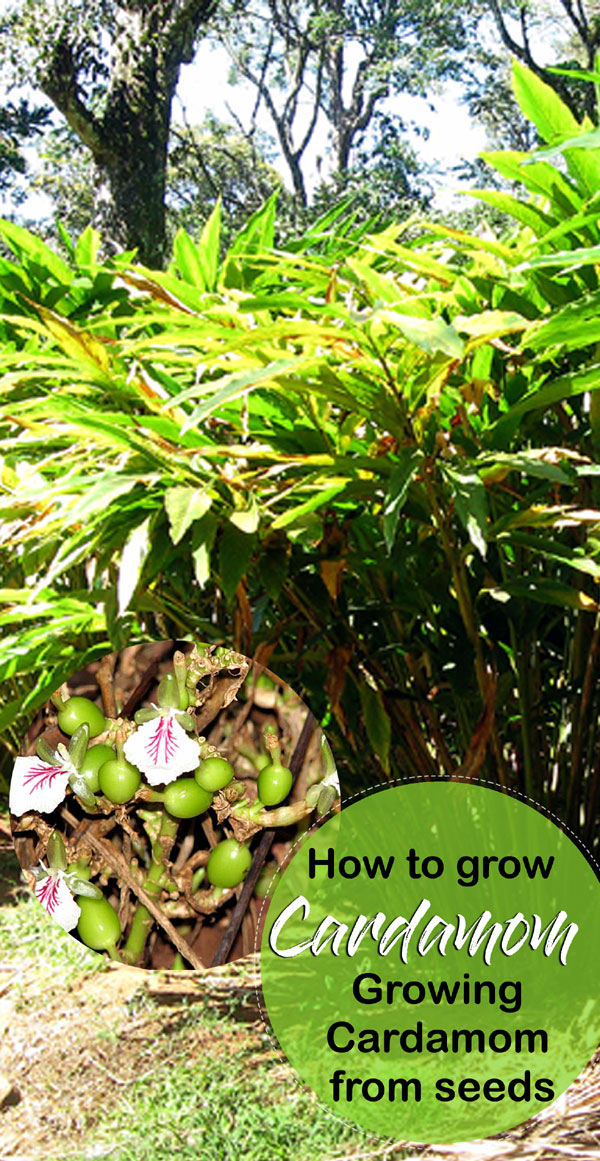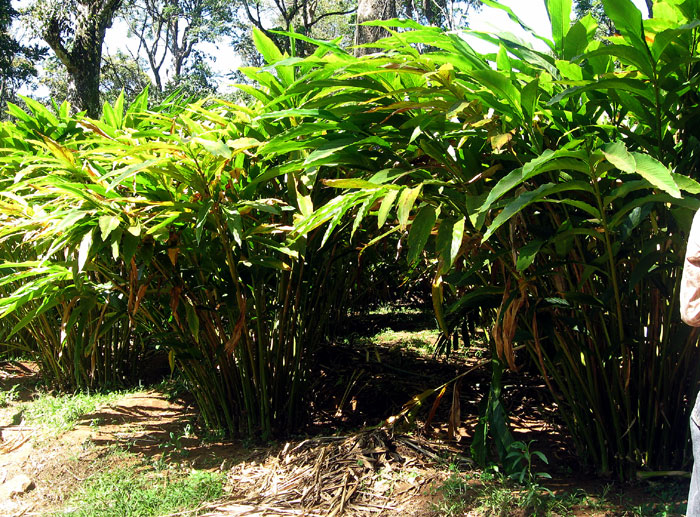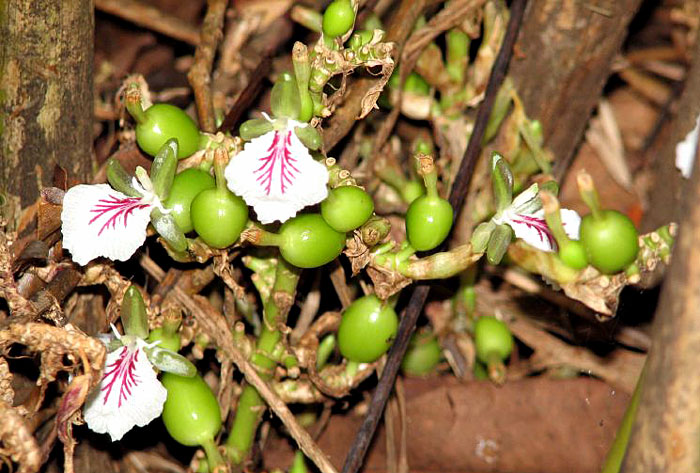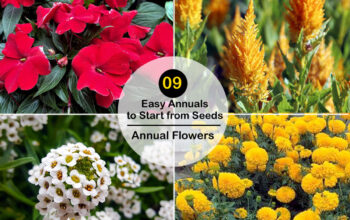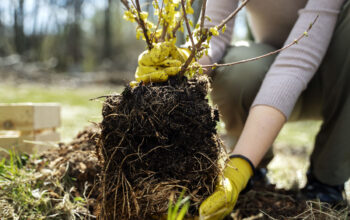Growing Cardamom (Elaichi)
Cardamom is the world’s most expensive spice. It is popular all over the world due to its unique taste and aroma. Cardamom is native to India and Sri Lanka, it is grown in the south-west mountains of India. It prefers a very hot and humid climate, if you live in the US Department of Agriculture hardiness zone 10 to 13, you can grow cardamom plants. This plant requires an average temperature of 10 ° C. In their native habitat they grow to 8–15 feet. Learn How to Grow Cardamom (Elaichi), Growing Cardamom from seeds, cardamom spices plant, pests, and disease advice by our experts. However, it has some difficulty in growing, so see the tips below.
Overview of Cardamom plant
Scientific name Elettaria cardamomum
Common name Cardamom, Elaichi
Plant type Spice plant
Sun requires Filtered sunlight or partial shade
Flower colors Yellow or red
Soil well-drained, sandy loam soil
Soil pH 4.5-7
Zone 10-13
Popular names
In India, it is called by various names. Elaichi in Hindi, elakki it in Kannada, yelakulu in Telugu, Velchi or veldoda in Marathi elakkai in Tamil, Elaichi in Punjabi, and maland elakka in Malayalam.
How to Grow Cardamom
Soil and Location
Cardamom plants prefer well-drained, sandy, and loam soil, never grow cardamom in rich soil consisting of organic matter. Its plants require slightly acidic soil and can tolerate a pH level of soil between 4.5 and 7. Cardamom plants prefer filtered sunlight or partial shade, so the full sun should be avoided. It grows up to 2 – 4 meters in filtered sunlight of large tree canopy.
Planting
The best time to sow cardamom plants in June -July, at this time the monsoon is light moisture and cloudy. If you want to sow cardamom seeds, the method of planting is given below. The method of applying its rhizome is like ginger. Mature sucker, which has at least one young growing shoot, can be planted in prepared soil (in which water can drain easily). Fill the remaining pit with soil after planting. Elaichi plants require full shade and lots of water. It is colder sensitive than ginger.
Propagation
- Take the seeds out of a special shell to allow the seeds to germinate easily.
- Pour 2.5% nitric acid solution in a glass tumbler, add seeds to it and stir for about 2 minutes. Now pour the seeds in a sieve and then wash them thoroughly with water.
- Place the washed seeds in the bowl and cover by adding lukewarm water and leave it overnight. Now your seeds are ready for planting.
You can also grow cardamom plants by division. For this, its rhizomes also have to be divided, which are about a year old and have two growing stems.
Temperature
Cardamom plants are tropical, hence preferring hot and moist climate. It grows well in humid or very humid subtropical regions. It can tolerate a minimum temperature of 17 ° C and a maximum temperature of 40°C to grow it, but the average temperature of 25° C day is ideal. spices
Watering
Cardamom plants grow in rainforest areas where most of the rainfall is around 200 days a year. This is the reason why the soil of the plant is always kept moist. When the plant is bearing fruit, irrigation is necessary for further production to avoid drought in the summer season, as the flowering and fruit set begins in the plant at this time. You can provide good irrigation at an interval of 10-15 days till the onset of monsoon.
Fertilizer
In this spices plant, fertilizer can be divided and feed into two doses. The first dose is feed during May. This helps in the development of new stems fruit capsules. Take the second dose at the end of September, it helps in the introduction of panicle and sucker. Apply fertilizer around the plant and cover it with a thin layer of soil. An NPK fertilizer containing a high amount of phosphorus or organic manure like animal manure is recommended. Apply about 5 kg of organic manure every year.
Growing Cardamom from seeds
- Buy cardamom seeds from a good seed shop. Although you can buy cardamom from the grocery store, you can get cardamom seeds, but buying seeds from the seed store is good. These seeds are more likely to grow.
- If you want to sow cardamom seeds then it is necessary to prepare its seeds before planting, there is a mucilage on its seeds, to separate it, pour its seeds in lukewarm water and wash it well, then place it in the shade Leave to dry.
- To sow cardamom seeds, choose a container of 1 foot deep and 6-7 inch width. Spread a piece of broken clay pots on the surface of the container or on the gravel surface and add some sand to the loam soil, allowing the water to drain properly.
- With the help of a finger in the container, push the seeds in the soil about 1/8 inch deep, and cover with light soil. Slowly water the seeds, so that the soil remains moist. Plant the seed about 1 inch apart in the container, so that it can be easily thin planted.
- When some leaves grow in the cardamom plant, then transfer it to another place. It takes about 90 days for plantation to mature.
- If you want to plant in the garden, the soil should be well-drained. Not much rich soil is needed, it will kill the plant, the pH level of soil between 4.5 and 7 is ideal.
- Cardamom plants (elaichi) will not be able to tolerate sunlight; for this, choose a location with partial shade. Its plants grow well under trees. Read also.
*Prepare fresh cardamom seeds for planting success. Wash the seeds with lukewarm water and remove the mucus, and allow the seeds to dry in the shade.
Harvesting
The cardamom plant requires about 3 years for its mature capsule production. Capsules develop after the flowers mature in their plant and dry out after a time. When the green color of the capsule starts to become olive green, it becomes collectible, dries on the screen in about 7-8 days, and shrinks. spices
Problems with Cardamom spices
Cardamom spices plants are affected by diseases such as viruses, fungi, and bacteria, however, it is possible to diagnose this problem. Katte viral disease mainly affects it, it can be treated, but you can prevent it by planting germ-free healthy seedlings. Disease affected rhizome should be avoided from planting. Due to fungal diseases, spots appear on the leaves of the plant, if you provide adequate shade to the plant, you can control it.
Read also: How to grow Pansy flowers. Poppies growing tips. Bottle gourd growing and care tips. Calendula growing guide. How to grow Croton in containers. 10 Uses of Vinegar in the garden. Growing Golden Creeping Jenny. Growing Black peppers in containers. Coriander Growing and care in containers. Celerygrowing in containers. Coriander Growing and care in containers. Plumeria growing and caring guide. 9 Easy growing Herbs for your garden. Growing Peanuts at home. Carnation growing and caring tips. Bleeding hearts flowers growing tips. Kiwi fruit growing in containers.
Happy gardening
Pin it:
